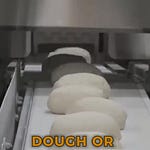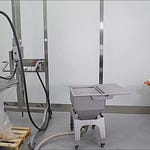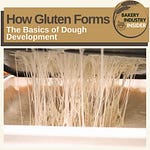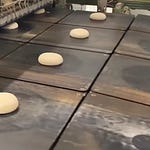Though often accepted as part of muffin texture, they may not always be desirable—especially when a uniform crumb is the objective.
1. What Causes Them?
As muffins bake, several simultaneous transformations take place:
Starch Gelatinization and Batter Viscosity
When exposed to heat, starch swells and gelatinizes, especially at the edges of the batter. This increases viscosity in the outer zones, while the center remains more fluid.Gas Expansion and Bubble Coalescence
Inside the muffin, steam and carbon dioxide from the leavening agent cause expansion. In partially gelatinized areas, small gas bubbles begin to merge into larger ones.
Tunnel Formation Dynamics
These larger gas pockets rise through the less viscous central batter. As the surrounding structure sets, the gas travels vertically and creates tunnels. These are eventually trapped as the crumb solidifies.
2. How to Reduce or Eliminate Tunnel Holes
You can address this defect by adjusting formulation and processing parameters:
Rebalance Sugar-to-Water Ratio
Increasing water slightly helps reduce batter viscosity and delays gelatinization, which prevents large gas bubble formation.Modify Mixing Process
Overmixing causes excessive aeration and gluten development, increasing the likelihood of tunneling. Use minimal mixing to limit air incorporation.Check Leavening Agent Type and Amount
Fast-acting baking powders or excessive quantities may lead to excessive gas release. Adjust accordingly.Temperature Control
Baking at high temperatures can cause the outer crust to set too early, forcing gas to travel upward. Optimize baking temperature profiles for even setting.
3. Consumer Perception
Tunnel holes are sometimes considered a “signature” trait in muffins by consumers. Completely removing them may negatively affect product perception. Any formulation changes should be validated with sensory or consumer testing.
Thanks for reading! Any experiences to share with us? We’d love to hear your story!
Source: https://lnkd.in/dj6xqqGh











